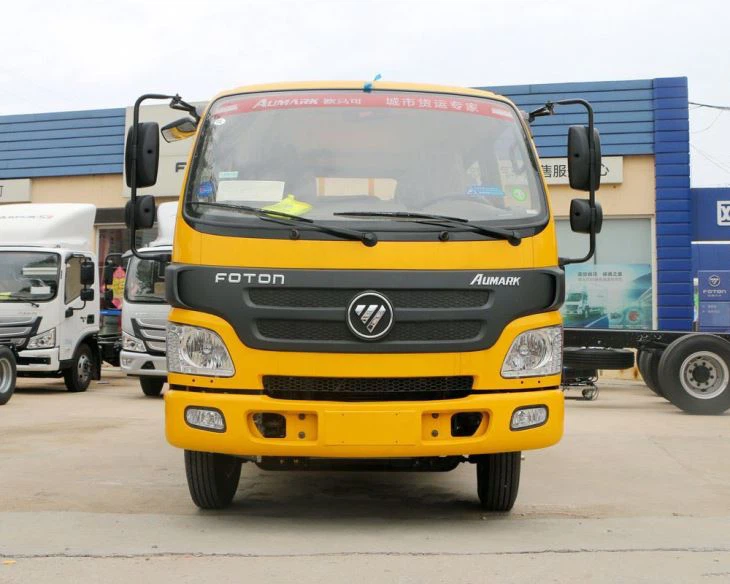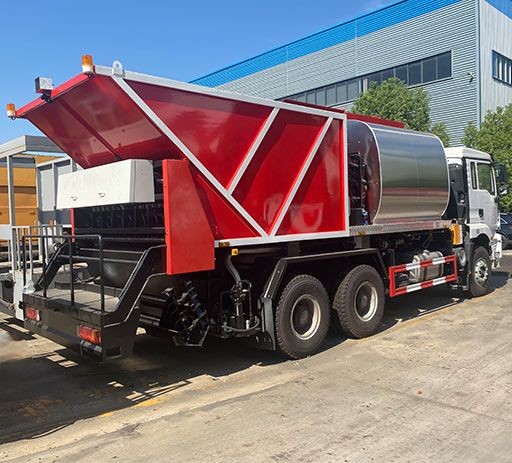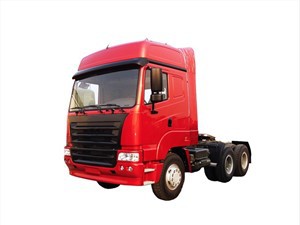Mini Street Sweepers: The Comprehensive Guide to Efficient Urban Cleaning

Introduction
In urban areas, maintaining cleanliness is crucial for aesthetics, health, and safety. Traditional street sweepers may be too large for many environments, particularly in compact and congested urban settings. This is where mini street sweepers come into play. These compact machines are designed for efficiency without compromising performance. In this guide, we will explore the features, benefits, and practical applications of mini street sweepers, providing insights for businesses and municipalities looking to enhance their cleaning operations.
What is a Mini Street Sweeper?
A mini street sweeper is a smaller, more maneuverable version of a standard street sweeper. These machines are specifically designed to clean streets, parking lots, sidewalks, and other hard surfaces effectively. They combine suction, brooming, and other cleaning technologies to achieve superior results in litter and debris removal.
Key Features of Mini Street Sweepers
- Compact Size: Their smaller footprint allows them to navigate narrow streets and tight spaces effectively.
- Strong Suction Power: Many models feature advanced suction systems to pick up fine dust and larger debris alike.
- Eco-friendly Options: Various models are equipped with low-emission engines or electric power sources.
- User-friendly Interfaces: Operators can quickly learn to use these machines thanks to their intuitive controls.
Benefits of Using Mini Street Sweepers
Investing in mini street sweepers offers numerous advantages for cities and businesses alike. Let’s discuss some key benefits.
Increased Maneuverability
Due to their compact size, mini street sweepers can easily navigate through hallway streets and busy areas. This flexibility enhances street cleaning efficiency.
Cost-Effective Solutions
Mini street sweepers often come with lower acquisition and operational costs compared to traditional sweepers. They require less maintenance and consume less fuel, making them economically viable for small to medium-sized municipalities.
Improved Air Quality
Many mini street sweepers feature dust control systems that reduce airborne particles during operation. By minimizing dust, they significantly contribute to improved air quality in urban environments.
Enhanced Cleaning Performance

With advanced mechanical technologies, mini street sweepers can operate in various weather conditions, ensuring that streets are kept clean regardless of the season.
Types of Mini Street Sweepers
Mini street sweepers can be categorized into several types, each designed for specific cleaning needs.
Mechanical Broom Sweepers
These use rotating brushes to sweep debris into a hopper for collection. They are ideal for loose dirt and debris on asphalt surfaces.
Practical Example
Municipalities often use mechanical broom sweepers during spring cleaning to remove winter accumulated debris effectively.
Vacuum Sweepers
Vacuum sweepers combine suction and brooming systems to gather smaller dirt, dust, and debris particles more effectively.
Practical Example
Parks and recreational areas often employ vacuum sweepers to clean pathways and picnic areas quickly.
Ride-On Mini Sweepers
These models allow operators to ride on the machine, covering larger areas more efficiently than walk-behind options.
Choosing the Right Mini Street Sweeper
Selecting the right mini street sweeper requires considering several factors to meet specific needs and requirements.
Consider the Area of Operation
Evaluate the size and type of surfaces that need cleaning. For narrow sidewalks, a compact model might be necessary.
Assess the Type of Debris
If dealing with fine dust, a vacuum sweeper may be more effective. Conversely, for larger debris, mechanical broom sweepers can do the job.
Evaluate Budget Constraints
Determine how much financial investment aligns with your cleaning needs. Look for models that offer the best features without exceeding budget limits.
Table of Mini Street Sweeper Costs
| Type | Average Cost | Best For |
|---|---|---|
| Mechanical Broom | $20,000 – $50,000 | Surface Cleaning |
| Vacuum Sweeper | $30,000 – $70,000 | Dust Control |
| Ride-On Mini Sweeper | $25,000 – $60,000 | Larger Areas |
Maintenance Tips for Mini Street Sweepers
To ensure long-lasting performance, regular maintenance is essential for mini street sweepers.
Routine Checks
- Inspect brushes for wear and tear regularly.
- Check the suction system for blockages.
- Monitor fluid levels and change filters as required.
Seasonal Maintenance
Before transitioning to different seasons, conduct thorough checks and maintenance adjustments depending on weather-specific cleaning needs.
Practical Example
Implement a maintenance schedule that aligns with climate changes to ensure proper function; for instance, checking seals before winter.

Case Studies: Successful Implementations of Mini Street Sweepers
Examining real-world examples can shed light on the practical benefits of mini street sweepers.
City Parks Deployment
In a North American city, the parks department integrated vacuum mini street sweepers to maintain cleanliness in public parks. The decision led to a 40% reduction in litter and enhanced park visitor satisfaction.
Corporate Campuses
A tech company’s sprawling campus adopted ride-on mini street sweepers for daily maintenance. Employees reported improved working conditions, contributing to overall productivity.
Future Trends in Street Cleaning Technologies
The street cleaning industry continues to evolve, integrating new technologies that enhance the functionality and efficiency of mini street sweepers.
Electric and Hybrid Models
As awareness of environmental issues rises, the demand for electric and hybrid street sweepers is increasing. These options promise reduced emissions and lower noise pollution.
Smart Technologies Integration

The use of IoT (Internet of Things) in street maintenance allows real-time monitoring of sweeper performance and trail management, improving overall operational efficiency.
Frequently Asked Questions (FAQ)
1. How much does a mini street sweeper cost?
The cost varies depending on the type and specifications, ranging from $20,000 to $70,000.
2. What’s the ideal maintenance schedule for mini street sweepers?
Conduct daily inspections and an in-depth check every month or at the start of each season.
3. Can mini street sweepers handle heavy debris?
Yes, mechanical broom sweepers are well-suited for larger debris, while vacuum sweepers excel in fine dust and smaller items.
4. Are mini street sweepers environmentally friendly?
Many models feature low-emission engines and advanced dust control systems, making them a greener choice for urban cleaning.
5. What types of surfaces can mini street sweepers clean?
They can effectively clean asphalt, concrete, gravel, and brick surfaces.
6. How do I decide between a mechanical broom and a vacuum sweeper?
If you’re dealing with loose dirt, a mechanical broom may suffice. For fine dust and litter, a vacuum sweeper is more effective.
